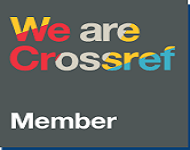Pelatihan English Speaking bagi Siswa dengan Model Pembelajaran Presentation Practice Produce (PPP)
DOI:
https://doi.org/10.33394/jpu.v3i1.4531Keywords:
Training, Speaking Skill, English Language, Presentation, Practice, Produce.Abstract
References
Borup, J., Chambers, C.B., & Stimson, R. (2019). K-12 student perceptions of online teacher and on-site facilitator support in supplemental online courses. Online Learning, 23(4), 253280. doi:10.24059/olj.v23i4.1565
Conklin, S. & Garrett Dikkers, A. (2021). Instructor social presence and connectedness in a quick shift from face-to-face to online instruction. Online Learning, 25(1), 135-150. https://doi.org/10.24059/olj.v25i1.2482
Crystal, D. (2012). English as a Global Language (second edition ed.). New York: Cambridge University Press.
Dhawan, S. (2021). Online Learning: A Panacea in the Time of COVID-19 Crisis, Journal of Educational Technology Systems 2020, Vol. 49(1) 5–22
Ersoz, Aydan. (2000). Six Games for the EFL/ESL Classroom. The Internet TESL Journal, Vol. VI, No.6, June 2000. Retrieved from http://iteselj.org/lesson/Ersoz-Games.html on February14, 2013.
Gunawan Setiadine, et al. (2016). The Development of Blended Learning-Based Self- Learning on Classroom Action Research Training Material to Improve Teachers Professionalism. Proceeding The 2nd International Conference On Teacher Training and Education Sebelas Maret University. Volume 2 Number 1 2016 ISSN : 25002– 4124.
Hakim, A.R., & Muntaha, M. (2018). The Implementation of Rewards and Punishments in Teaching English at Ninth Grade Students of MTSN 2 Boyolali Pulutan in Academic Year 2017/2018. IAIN Surakarta.
Hamid, Idrus. (2014). Peningkatan Kemampuan Berbicara Bahasa Inggris Melalui Media Gambar Berseri. Jurnal Pendidikan Bahasa dan Sastra, Tahun 13, No. 1, on January 2014.
Harmer, J. (2007). The Practice of English Language Teaching. Harlow: Longman.
Hidayatulloh, A., Rijal, K., Pratama, I., & Malikah, Hr, B. (2021). Pelatihan Pembelajaran Daring Berbasis Zoom untuk Guru MA NW Kabar Kabupaten Lombok Timur. Jurnal Pengabdian UNDIKMA, 2(1), 115-119. doi:https://doi.org/10.33394/jpu.v2i1.3581
Ivanov, D. (2020). Predicting the impacts of epidemic outbreaks on global supply chains: A simulation-based analysis on the coronavirus outbreak (COVID-19/SARS-CoV-2) case. Transportation Research Part E: Logistics and Transportation Review, 136, 101922.
Lee, K.R., & Oxford, R. (2008). Understanding EFL Learners’ Use and Strategy Awareness. ASIAN EFL Journal, 10(1), 7-32.
Oka Ribawa, I Ketut, I. Gusti Ayu Gde Sosiowati, Made Sri Satyawati. (201)6. Penerapan Metode PPP (Presentation, Practice, Produce) dalam Pembelajaran Menulis Teks Deskriptif. Jurnal Linguistika, Vol. 23, No. 44, Maret 2016.
Olasile Babatunde Adedoyin & Emrah Soykan (2020): Covid-19 Pandemic and Online Learning: The Challenges and Opportunities, Interactive Learning Environments, DOI:10.1080/10494820.2020.1813180.https://doi.org/10.1080/10494820.2020.18131 80
Suryawinata, Zuchridin dan Sugeng Haryanto. (2003). Translation: Bahasa Teori dan Penuntun Praktis Menerjemahkan. Yogyakarta: Kanisius.
Thorne K. (2003). Blended learning: How to Integrate Online and Traditional Learning.
London: Kogan Page Limited.
Uzur, A., & Senturk, A. (2010). Blending Makes the Diffences Comparison of Blended and Traditional Instruction on Students' Performance and Attitudes in Computer Literacy. Contemporary Educational Technology. Vol. 1 (3), 196-207.
Zainuddin, Z and Keumala, C.M (2018). Blended Learning Method Within Indonesian Higher Education Institutions. Jurnal Pendidikan Humaniora. Volume 6, Number 2, June 2018, pp. 69–77. Available online at http://journal.um.ac.id/index.php/jph. pISSN: 2338-8110/eISSN: 2442-3890.
Downloads
Published
How to Cite
Issue
Section
Citation Check
License
Authors who publish with this journal agree to the following terms:
- Authors retain copyright and grant the journal right of first publication with the work simultaneously licensed under a Creative Commons Attribution License (CC BY-SA 4.0) that allows others to share the work with an acknowledgment of the work's authorship and initial publication in this journal.
- Authors are able to enter into separate, additional contractual arrangements for the non-exclusive distribution of the journal's published version of the work (e.g., post it to an institutional repository or publish it in a book), with an acknowledgment of its initial publication in this journal.
- Authors are permitted and encouraged to post their work online (e.g., in institutional repositories or on their website) prior to and during the submission process, as it can lead to productive exchanges, as well as earlier and greater citation of published work (See The Effect of Open Access).





